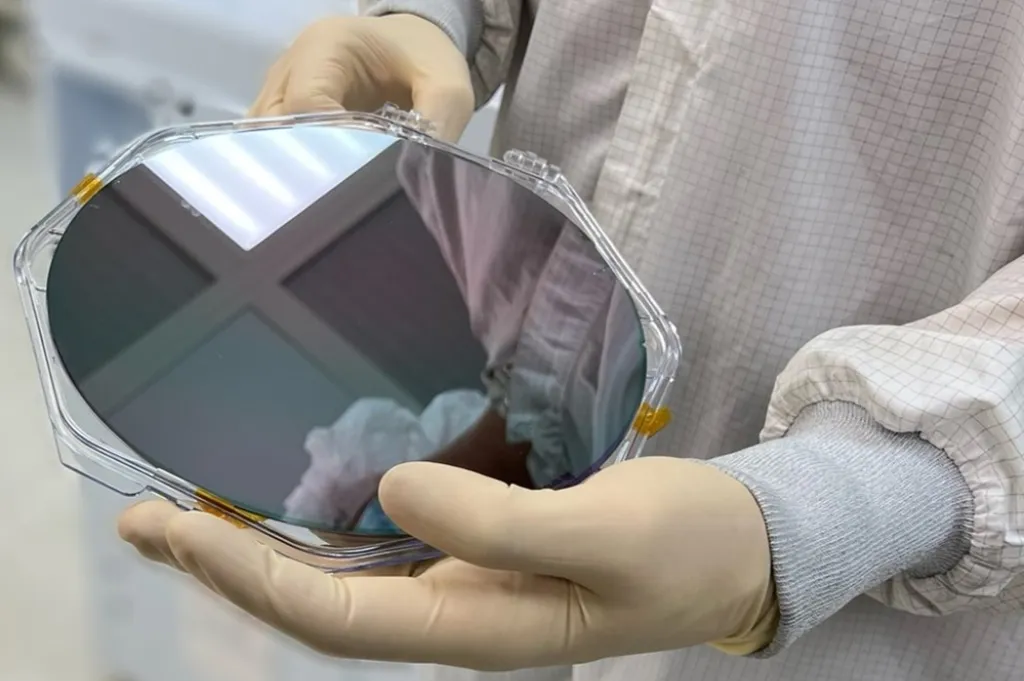In the heart of Ethiopia, researchers are unraveling the secrets of advanced materials that could revolutionize the energy sector. Melak Birara Dagnaw, a scientist at Adama Science and Technology University, has led a groundbreaking study that delves into the properties of a novel quaternary alloy, W0.5Mo0.5S2xSe2(1−x), with promising applications in optoelectronics. This research, published in the journal ‘Materials Research Express’ (translated as ‘Expressions of Material Research’), is shedding light on how these materials could enhance solar energy harvesting and other optoelectronic devices.
The study focuses on the structural, vibrational, electronic, and optical properties of a series of alloy compositions where tungsten (W) and sulfur (S) are co-substituted into the hexagonal crystal structure of molybdenum diselenide (2H-MoSe2). “By incorporating W and S, we can significantly alter the material’s properties, making it more suitable for optoelectronic applications,” explains Dagnaw. The team employed first-principles calculations using the Quantum Espresso platform to investigate these changes.
One of the key findings is that the substitution of W and S affects the lattice parameters, bandgap, and optical absorption of the material. The calculated equilibrium lattice parameters for both 2H-MoSe2 and the W/S co-substituted materials show strong agreement with experimental results and previously reported theoretical data. This consistency is crucial for the practical application of these materials.
The study also demonstrates that the material is dynamically stable, as indicated by the absence of negative frequencies in the phonon spectra. This stability is essential for the long-term performance of optoelectronic devices. Additionally, the calculated bandgaps of these layered materials are lower than the experimental bandgap of the unsubstituted material, suggesting enhanced favorability for optoelectronic applications.
The optical properties of the materials were also computed, with the Penn model providing an accurate description for both 2H-MoSe2 and the W/S co-substituted systems. “The optical absorption properties of these materials are particularly promising for applications in solar energy conversion,” notes Dagnaw. The enhanced optical absorption could lead to more efficient solar cells and other optoelectronic devices.
This research has significant implications for the energy sector. As the world seeks to transition to renewable energy sources, materials that can enhance the efficiency of solar energy conversion are in high demand. The findings of this study could pave the way for the development of more efficient and cost-effective optoelectronic devices, ultimately contributing to a more sustainable energy future.
The study’s lead author, Melak Birara Dagnaw, emphasizes the importance of continued research in this area. “Our findings provide a solid foundation for further exploration of these materials and their potential applications,” she says. As the scientific community continues to investigate the properties and potential of these quaternary alloys, the energy sector stands to benefit from the development of more efficient and sustainable technologies.
In the quest for cleaner and more efficient energy solutions, the work of researchers like Melak Birara Dagnaw is crucial. Their findings not only advance our understanding of advanced materials but also bring us one step closer to a more sustainable future. As the world grapples with the challenges of climate change and energy security, the insights gained from this research could prove invaluable in shaping the energy landscape of tomorrow.

